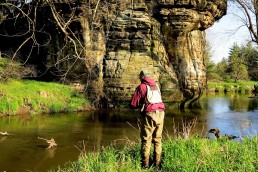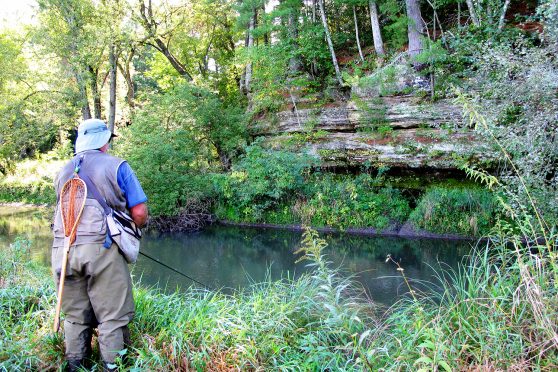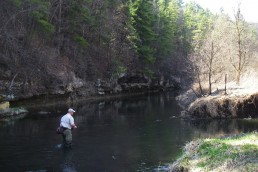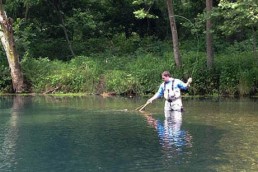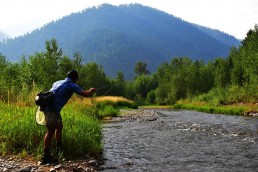The Stream of Time
SHARE THIS POST
I have lived in Richland County for approximately 25 years. My hometown is Gays Mills, Wis. I am an avid trout angler and outdoors person. My wife Barb hikes and bikes throughout Wisconsin.
My fishing has given me a unique view of the streams in my now home water. I fish 70 percent of my time in Richland County, chasing trout. The scenery here is amazing. The rock outcroppings are majestic and awe-inspiring. It never gets old seeing what Mother Nature and Father Time have created. Trout don’t live in ugly places.
About four years ago, I made a comment to an acquaintance about trout fishing being so important to me, and he dismissed it. He said trout fishing was the least important thing he does in life, and I shouldn’t make it so important.
I wholeheartedly disagree with him. Many people go to church to feel spiritual and be in touch with the universe. I go into the outdoors to cleanse my soul. All the things in life that bother me are melted away about a hundred yards from the truck. The fish are only a bonus in the whole scheme of things.
The rock formations that occur along the streams in this area are second to none for beauty and grandeur. I am in awe, and feel a reverence for these beautiful places I am allowed to enjoy. My cathedral awaits me every trip to the stream.
Richland County does not have a monopoly on beautiful places. My fishing takes me often to Crawford and Vernon counties. The sandstone outcroppings around Gays Mills in Crawford County are from the Jordan Formation—a much newer formation.
Are you enjoying this post?
You can be among the first to get the latest info on where to go, what to use and how to use it!
I asked the family expert in the matters of everything geological about the rock outcroppings.
Sandstone outcrops
These beautiful photos show outcrops of Cambrian age sandstones that were deposited in a shallow sea between 495 and 545 million years ago. At that time, Wisconsin was located near the Equator, which rotated 90 degrees to its present position.
The sandstone consists mostly of well-rounded quartz grains, indicating they underwent rigorous movement, grinding away at the rough edges until smooth and rounded. After being deposited in the shallow sea, the loose sand grains were cemented to form the rock sandstone. Some layers are cemented better than others, and stand out further upon weathering.
Almost all rocks of Cambrian age in this part of Wisconsin are sandstone. Geologists divide them into recognizable units called formations (see diagram). Only detailed field studies could determine exactly which formation these rocks belong to, but knowing they are in Richland County, it is likely they belong to the Wonewoc Formation. Excellent exposures can be seen north of Richland Center along Hwy 80 and Hwy 58.
Geological information provided by Dr. Brian K. McKnight. Professor McKnight retired in 1999. Brian received the Distinguished Teaching Award in 1984 and the Rosebush Professorship in 1987. He taught honors geology, structural geology, sedimentology, and oceanography at the University of Wisconsin Oshkosh.
MWO
SHARE THIS POST
Did you enjoy this post?
You can be among the first to get the latest info on where to go, what to use and how to use it!
Len Harris
Len Harris lives in the heart of the Wisconsin driftless area. He fishes for anything that has fins. His first love is small stream trout fishing, with northern pike fishing a close second. Harris writes for many local papers and has written two books that are available on Amazon.
